Who has never felt a little apprehension, when dropping off to sleep, or when ashore and losing sight of the bay and its marvels (talking about your boat here) swinging nonchalantly at the end of a chain, itself attached to a lump of metal weighing a few kilos called an anchor? Can anyone claim to have never dragged? Anyone who has never encountered electrical problems just when hauling up the anchor will recount tales of a fantastic cruise. So what we’re really interested in is the principal elements for anchoring a modern 40-50 foot catamaran: the anchor, the chain, the windlass and the power required.
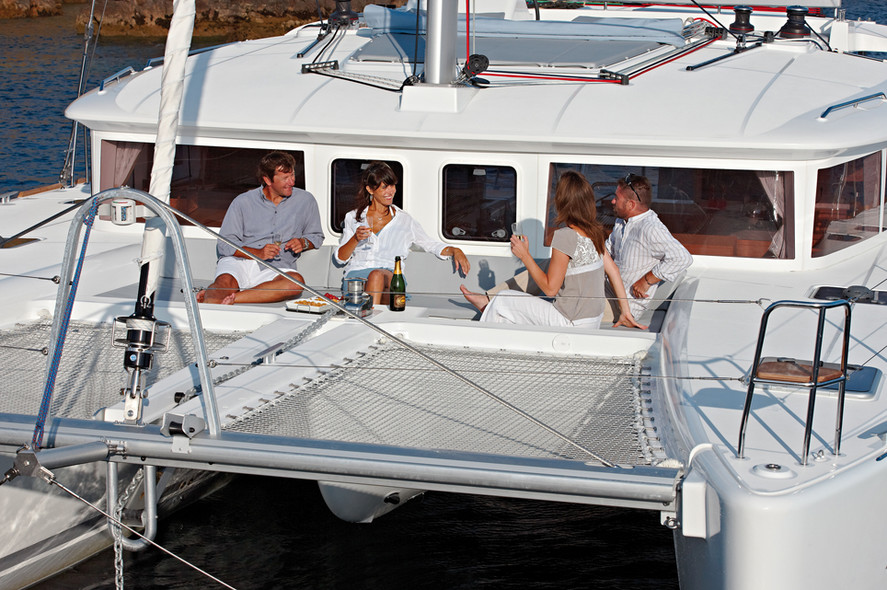
With a good anchoring setup, you can enjoy the moment with no stress…
Anchors
First of all, the anchor (15 to 25 kilos). Modern plow types with weighted tips have shown their efficiency by burying faster than older types, and especially only dragging slowly when conditions increase, rather than breaking out. The downside is they work better with chain four or five times the depth of water as opposed to three, as we are always (wrongly) told. The alternative is a fluke anchor (Danforth-style anchor). These will hold very well in sand, less so in weed, but always choose one with a long stock so it will reset properly if you have turned through 180°. Whichever type, be aware of the option to use an anchor buoy, and rode or chain to set a tandem anchor. Finally, having tried experimenting with it, one is advised to carry a light fluke anchor on board (with long stock, as mentioned) and a weighted line (or rode and a short length of chain) which will come in handy when you have a problem or when you need to do something with your main anchor.
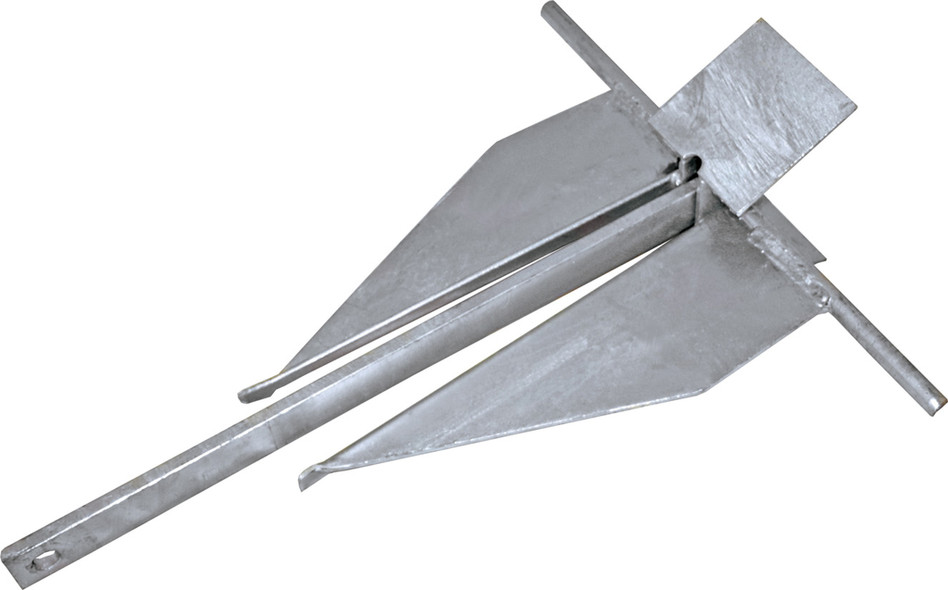
A fluke anchor with long stock is recommended for anchorages where the anchor might break out. The stock will help the anchor reset in a different direction.
Chain
Even though you can always get an anchor that’s a bit heavier, or a different model, for the chain you are restricted by two things: with the diameter which will fit over the gypsy for your windlass, and also by the industry standards (ISO for some countries and DIN for others). It should be noted that if you need to measure your chain, do so over several links, because the differences might not be apparent measuring just one. If you are renewing your chain while you’re away, it might be easier to ship the correct size of gypsy to a Caribbean island than 200kg of ISO chain. On the other hand, many are tempted to uprate from 10mm (at 2.2kg/meter) to 12mm 3.3kg/m) to end up with more weight and greater strength. But this change will usually necessitate replacing the gypsy, or even the windlass, but this may be prohibitive cost-wise or you may not have the space for a bigger one. You could also consider opting for a grade 70 higher resistance chain, and this would allow you to reduce size and hassle, but still keep the same breaking strain. You’ll also be carrying less weight.
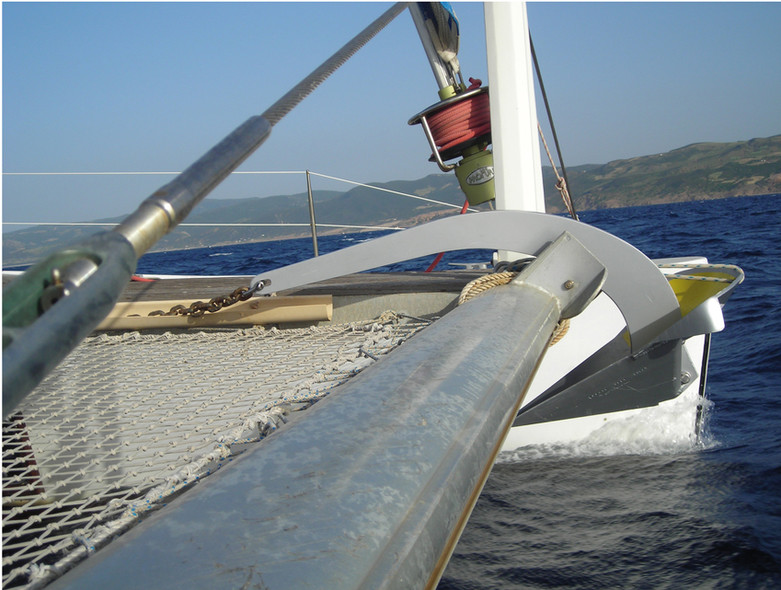
A modern plow anchor has good burying qualities, and only drags very slightly without completely breaking out.
The windlass
For the windlass, you’ll have understood by now that it’s advisable to have a model where you can change the gypsy fairly easily. After that, the choice is between vertical or horizontal, both being able to be equipped with a winch drum which could be used for hoisting sails or pulling a line. The choice is going to be determined by the dimensions of the space provided for the windlass, the space in the chain locker and the angle of pull between the windlass lead and the bow roller. With a horizontal windlass, the chain only travels 90° around the gypsy, whereas on a vertical windlass it goes through 180° before dropping into the chain locker. The bow roller needs to be at least at the same height as the capstan, and if it’s lower, like for those crossing the nacelle, the greater hold between 100 and 140° will be more effective. If the bow roller on the forward beam is slightly higher than the nacelle, a vertical windlass would work better… on condition that the chain locker is sufficiently deep, because the windlass motor will be below deck level. Also it’s a good idea to avoid this being hit by the chain. This can be done by the use of a little bulkhead or by having a ventilated case around it. As for damp, this is less of a worry than it used to be, as watertight motors are now available, corresponding to IP67 standard, but currently only for vertical windlasses. So how the installation fits in is a serious consideration for your anchoring system. As for the power, go for the highest possible so that there will be less strain, and it will be less thirsty for energy. A rule of thumb is that a 1000W windlass will be well-suited to a 40 foot vessel and 1500W for a 50 footer. Each would have a respective working load of 200 and 300kg, which in both cases corresponds to the whole anchoring set-up being let out, ie. the anchor itself plus 80 meters of chain. As for extras, don’t hold back: a chain stopper, if you don’t use a bridle, will protect your windlass; and a combination gypsy (chain/rope) will allow you to use rode as well as chain, giving a bit of shock-absorption. Also, a hand-held remote control will allow you to keep a better eye on the operation and foot switches on the deck are very useful for tailing a line on the capstan. A chain counter makes communication between the helmsman and the crewman, though you cannot control the windlass from the helm station. After all, you are only there for enjoyment. Finally, as long as you haven’t decided to take up residence in your magnificent immaculate blue lagoon, choose a windlass which can also be operated manually, especially when you are alone in the aforementioned lagoon.
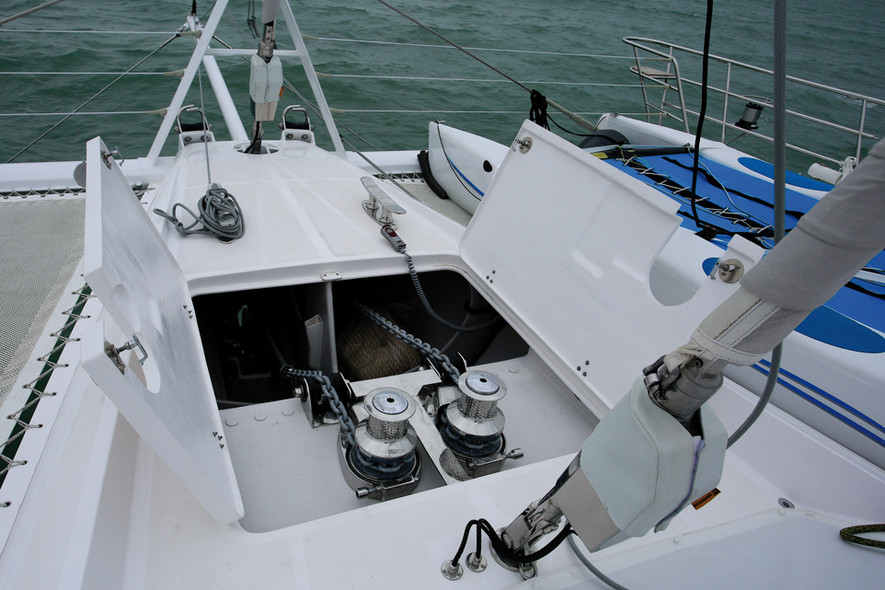
On this Privilège catamaran, things are taken seriously. The two capstan drums protrude above the deck once the hatches are shut.
Power
The battery banks of the modern-day catamaran are incomparable with those of our earlier boats, and the means of recharging them (solar panels, wind generators) have evolved significantly. Nowadays, intensive use of the windlass is possible with a reasonable, well-charged battery bank (a 1000W windlass will consume around 6 to 8 Amps during the two minutes necessary to pull up a decent amount of chain - say 30 meters weighing around 150kg). It is essential to have the motor running when breaking the anchor out, so a bit more current flowing, as this is the point where there will be a spike in demand which could trip the fuse. If you don’t have sufficient faith in your battery bank, you can always have a separate battery dedicated to the windlass, and not connected to the others. It’s not just the energy available, but also the raising of the anchor for happy and serene anchorages, and departures. Cable size, circuit breakers, relays, watertightness of connections, shut-off switch and control panel: you should follow the installation instructions to the letter to avoid the annoyance of a short-circuit or loss of power which could seriously damage the windlass.
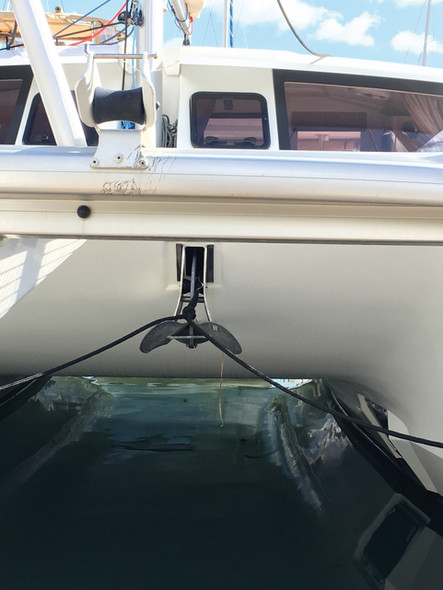
A second bow roller on the forward beam is great if you want to use a light anchor with a weighted rode or a rope/chain combination.
 Vote for your favorite multihulls!
Vote for your favorite multihulls! 

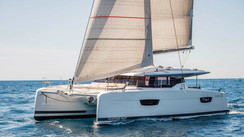
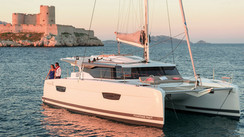
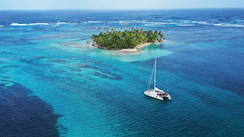
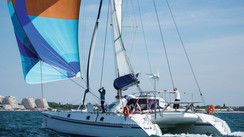
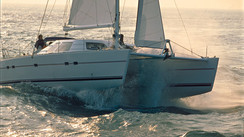
What readers think
Post a comment
No comments to show.